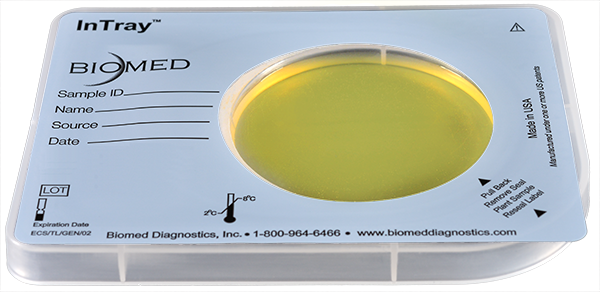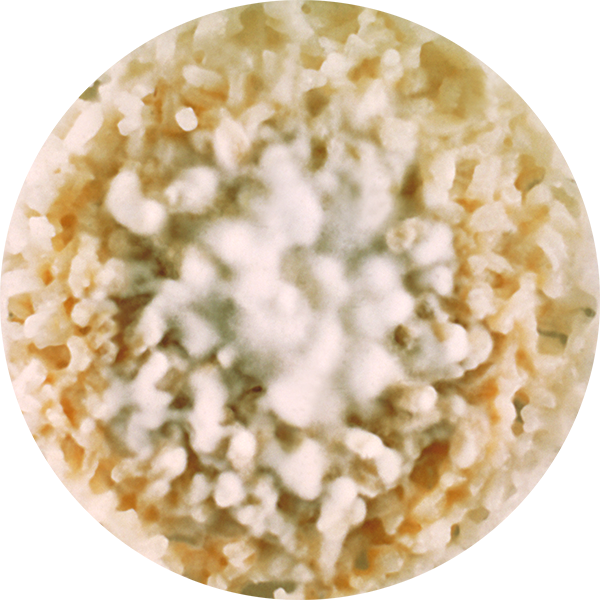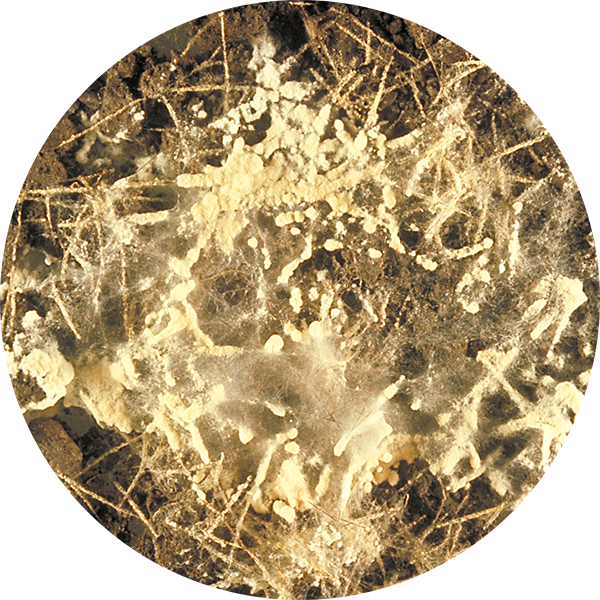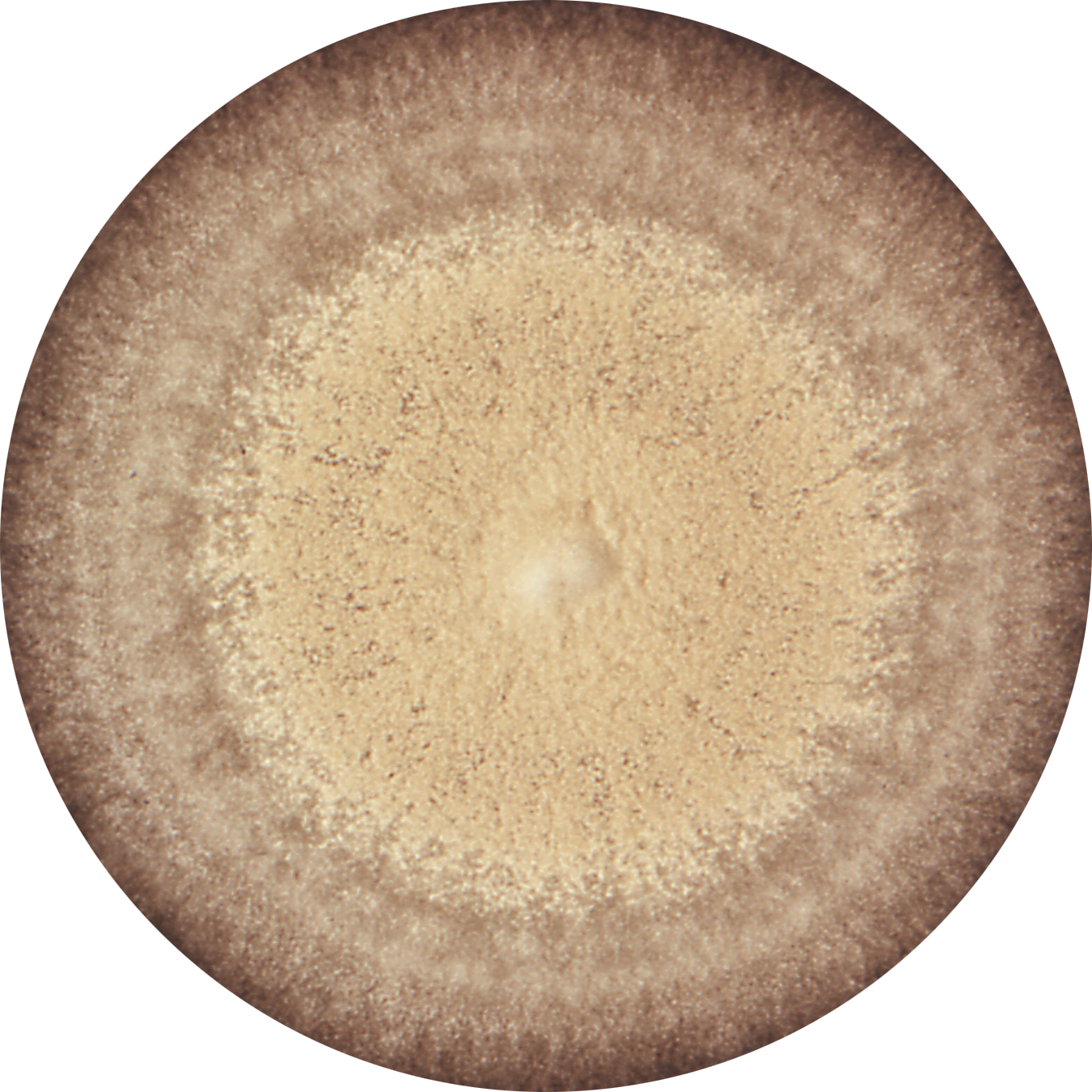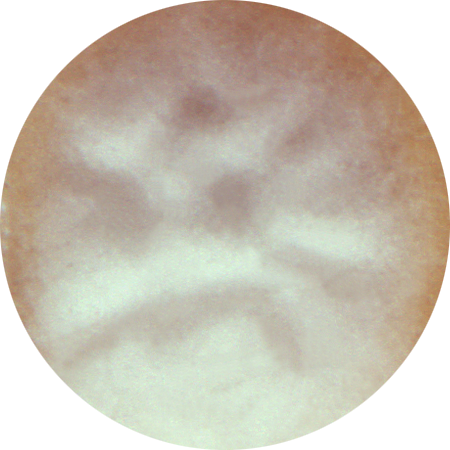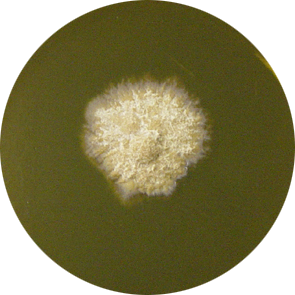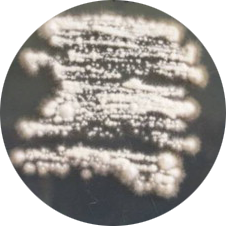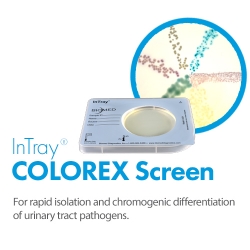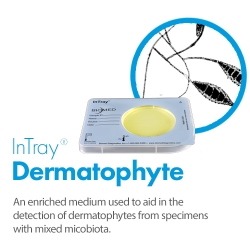Rapid presumptive positives
FungID products contain very similar nutrients/compounds; however, the main difference is that InTray Dermatophyte's media has a ‘presumptive’ dermatophyte positive color change indicator, phenol red. This molecule gives a yellow color in acidic microenvironments and turns to red in alkali conditions. Dermatophyte fungi generally turn DM media from yellow to red as soon as the fungal colony can be seen with the naked eye.
As standard procedure, most clinical labs use SAB w/CC as their primary plating media for dermatophytes. InTray SAB w/ CC has the additional benefit of 100x magnification microscopy direct from InTray device — with no need for replating.
InTray improves efficiency because the culture can be scanned directly for fungal hyphae that have distinguishing morphology (micro/macro conidia et al) that may be worth the effort of further work-up. For some species of fungi, diagnostic morphology can be distinguished from InTray 100x magnification alone.
InTray Dermatophyte is selective for:
View all Biomed Dermatophyte Products ►
Saphrophytic Fungi or Bacteria?
A color change may occasionally be produced by a specimen heavily contaminated with saprophytic fungi or bacteria. However, differentiation from dermatophytes can be made as follows:
Dermatophyte
A color change appears in the medium with colony growth—colony pigments are usually light colored.
Saprophyte Fungi
Colony growth is well established before any color change appears in the medium—colony pigments are usually dark colored.
Bacteria
The morphology of bacterial colonies differs from the morphology of fungal colonies.
Validation Studies and Papers
A color change may occasionally be produced by a specimen heavily contaminated with saprophytic fungi or bacteria. However, differentiation from dermatophytes can be made as follows:
Preliminary results from the evaluation of a simple diagnostic procedure for the detection of dermatophytes in companion animals.
P.R. Togerson, and M. Carter
Faculty of Veterinary Medicine, University College Dublin
Read Paper ►Comparative study of different microscopic techniques and culture media for the isolation of dermatophytes
S. Singh, PM Beena
Indian Journal of Medicine, 2003 v21 i1 pg21-24
Read Paper ►